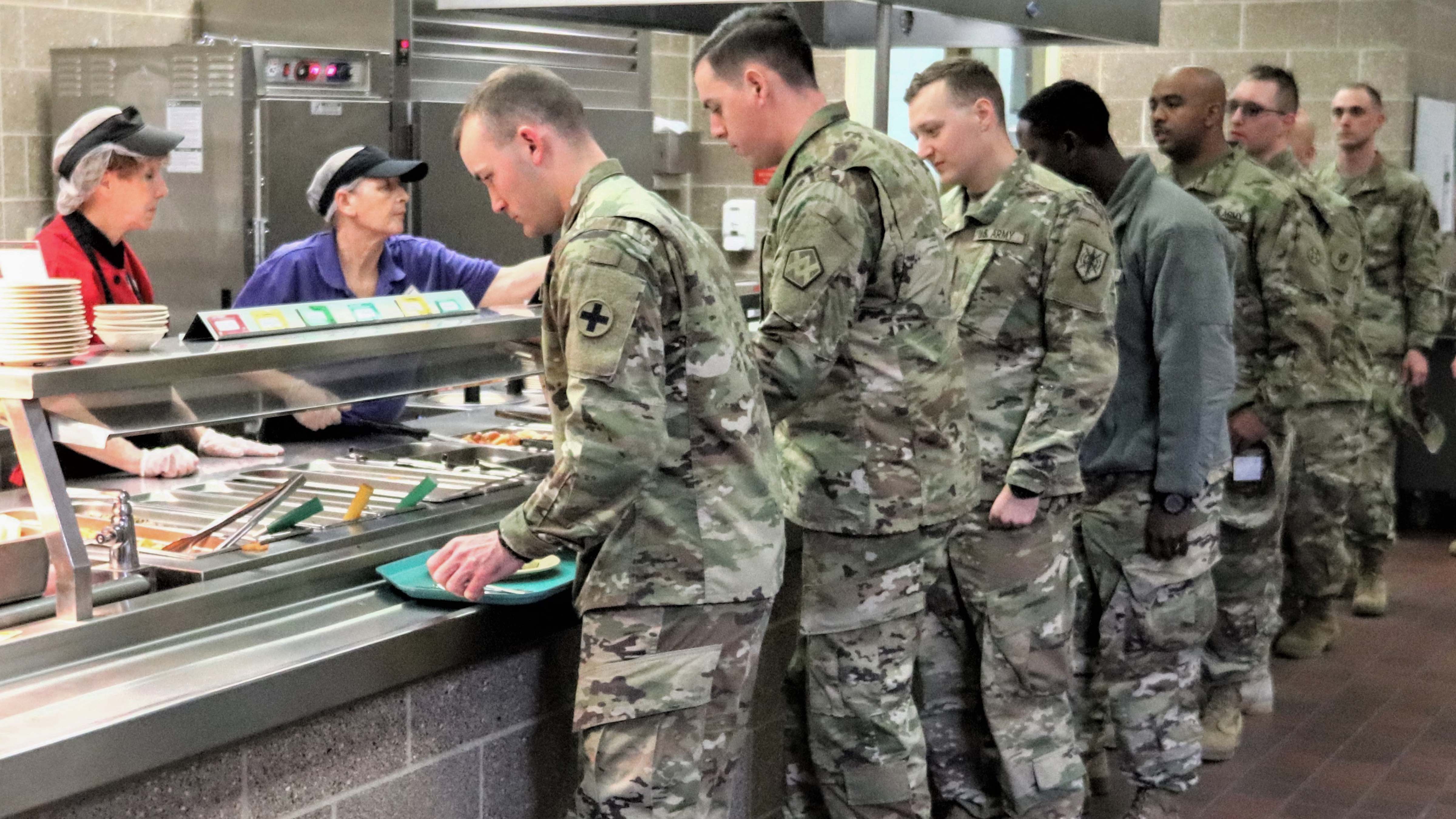

The Army wants to overhaul how soldiers go to chow with a new generation of dining halls that look and feel like college campus cafeterias. In the launch of a major overhaul that will hand control of dining facilities to private contractors, the Army released a Request for Proposals Tuesday that lays out what it wants its next generation of chow halls to look like.
The proposal details a new kind of dining hall overseen by a head chef and staff working as contractors and new nutrition rules that should expand the kind of food available. The plan envisions soldiers ordering meals in several different forms, including a la carte, dine-in, takeout, as meal prep, and even suggests the idea of delivery services, according to the terms of the proposal.
“The Army seeks a food service operation design and business model that is inspired by modern campus dining,” the proposal says. A private company that wins the contract will be asked to turn five dining facilities on five bases into a “modern 21st Century venue that creates an environment that will foster unit esprit de corps, provide ambiance that is inviting to single Soldiers and Families alike – to include recreational activities and space and social gathering areas that attract the authorized patron community.
The program will renovate one dining facility at each of five different bases: Fort Liberty, North Carolina; Fort Stewart, Georgia; Fort Cavazos, Texas; Fort Drum, New York; and Fort Carson, Colorado. During renovations, soldiers displaced from their normal dining hall will use still-open facilities elsewhere on those bases.
The first overhaul will be at Ft. Liberty’s Victory Warrior Restaurant, but the Army Material Command could not provide a definite timeline yet for construction or the opening of the new facilities.
Declining use of on-base dining
Army dining halls are aimed at soldiers in so-called Essential Station Messing status, the Army’s term for soldiers who live on base and rely on the dining halls for meals. Those soldiers are generally junior enlisted troops at or below the E-6 paygrade.
Dining facility attendance has been declining for years, with soldiers requesting more readily available options. That includes variable hours where soldiers can go workout after work, and grab a late supper while having a variety of menu items. The master menu included in the RFP is 90 pages long, including options like kiwi-avacado smoothies, rissole potatoes, and pork chow mein.
Once up and running, the new chow halls will be staffed by cooks who are private employees of the company running the facility, not Army cooks. Each dining venue, per the RFP, will be managed by a head chef with the minimum “certification by the American Culinary Federation or equivalent credentials” and will work directly with an Army dietitian.
The new venues will also be held to different nutritional and recipe choices than current Army dining halls. Menus at the new facilities will have to conform to nutrition standards set by the US Department of Agriculture rather than Army military dietary reference intakes located in Army Regulation 40-25, “Nutrition and Menu Standards for Human Performance Optimization.” This change is aimed at freeing the new facilities to include “pre-prepared vegetables, shredded lettuce, cut or marinated meats, and pre-made salsa,” the RFP said.
The contract includes several exceptions to Army food and contracting rules — such as buying local fresh food outside of the Defense Logistics Agency’s traditional purchasing process — that should increase variety and quality of food.
And how about delivery?
The proposal asks companies bidding for the job to include a plan to “reach the various portions of post (where the patrons are) with quality food utilizing various ‘delivery’ platforms/options.” Army official said they could not speculate on how a delivery service might work in practice or if it would be a final requirement.
The latest on Task & Purpose
